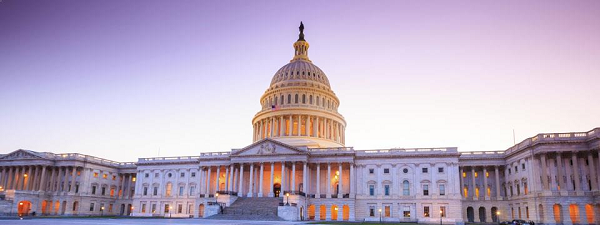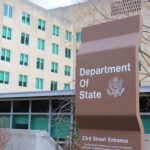As the coronavirus pandemic spreads and chaos absorbs the United States, I am still processing a week from March 8-13 immersed in government-created chaos immediately to our Southern Border. While last week the Trump Administration finally achieved its goal of turning back anyone seeking asylum from our borders, this is the culmination of three years of policies aimed at doing just that. These policies include the “metering” of asylum seekers through an illegal waitlist, the asylum transit ban (barring individuals from asylum protection who did not seek asylum in any country they touched prior to arrival in the U.S.) and the “Migrant Protection Protocols,” (known as MPP or “Remain in Mexico,” and forcing Spanish speaking asylum seekers and those from Brazil to await U.S. asylum hearings in Mexico). During my week in Tijuana, on March 11, the U.S. Supreme Court permitted MPP to stay in place for at least several months to come. History will judge the justices of the Supreme Court who voted to let the program continue along with those who are the masterminds behind the cruel and unnecessary “Remain in Mexico” program.
As an immigration law professor and asylum attorney, I led a spring break service-learning trip of University of the District of Columbia Law students and recent alumni to Tijuana, Mexico, to work with asylum seekers forced to fight their asylum claims on the Mexican side of the border.
Now that I have safely crossed the border back in the U.S., (without detention or secondary inspection by the U.S. government), I can speak out as I begin to process the horrors, and I use that word without exaggeration or hyperbole, that we witnessed. I’m calling on Joe Biden and Bernie Sanders to drill down to the specifics of their immigration platforms as they apply to asylum. Among other important policy changes, both candidates must commit to an immediate end to the Migrant Protection Protocols (MPP), the asylum transit ban, and the practice of “metering” at the border.
My week in Tijuana will haunt me. As an asylum attorney who has successfully represented hundreds of asylum seekers and an immigration law professor, I realize asylum is not a perfect remedy. It is the tip of the iceberg in terms of human rights abuses and can never right the wrong that is done to a survivor of torture, trauma or someone forced to flee their home to save their life and start afresh in the U.S. But, asylum grants some measure of protection and does, at the end of the day, save lives.
I am still haunted by the most clear-cut asylum cases I heard from desperate women, men and children in Tijuana and the fact they will likely be rejected in this dystopian, Kafkaesque system designed by the Trump Administration.
Let me share a few examples. I think of the Ugandan man who had been detained and tortured three times by his government and finally fled to stay alive for his wife and five children. I think of the Honduran activist for indigenous rights who was repeatedly threatened before she decided to flee. I think of the Somali man who fled persecution in his home country and established a life for himself in Colombia, which he later had to escape because he was targeted for his advocacy for Afro-Colombians. All of these individuals, in a pre-Trump world, would have stood a good chance of being granted asylum protection in the U.S.
This Administration has set up a system to intentionally reject meritorious asylum claims or prevent them from ever being presented. “Metering” is one such egregious policy intended to block access to asylum protection. The policy began under the Obama Administration but has been gleefully adopted by and – as with many draconian immigration policies – made infinitely worse by the Trump Administration. Metering or “la lista” is the idea that Customs and Border Protection (CBP), the largest law enforcement agency in the United States, is only able to process a very limited number of asylum seekers a day. U.S. government and Mexican authorities deny any involvement with the list. Inside a small booth in a parking lot, close to the El Chaparral pedestrian entrance to the United States in Tijuana, asylum seekers in a small booth maintain a list of individuals waiting to seek asylum in the U.S. Mexican authorities prohibit human rights observers and attorneys from approaching that booth. Every morning, “list managers” hand out a tiny scrap of paper on which a number is written. Ten people are given the same number. Everyone waits – some asylum seekers showing up every morning to this same spot at the border – for their number to be called. Some days a couple numbers are called and five asylum seekers are let through to pursue their claims; on other days, asylum seekers wait until 8:00 a.m. or later and no numbers are called. When your number is called, Grupos Beta, the humanitarian wing of the Mexican government, escorts you in a van to the other pedestrian entrance to the U.S. known as “Ped East.” Often a couple more asylum seekers are added along the way, perhaps “list managers” or those who have paid bribes to be allowed in that day. A lawsuit against the U.S. government filed in July 2017 has challenged the existence of this illegal list.
I had to explain the absurdity of “the list” at the border one morning around 6:30 a.m. to a Russian asylum seeker who arrived directly from the Tijuana airport. A thin blonde man, his face gaunt and full of anxiety, arrived carrying nothing but a small plastic bag with all of his belongings. He explained to me, as we used translation apps on our phones to communicate, that he had spent all the money he had to fly across the world and seek asylum. He had heard from other friends who sought asylum in the U.S. that you could enter from Mexico and present yourself as an asylum seeker at the port of entry. He was prepared to be put in a very cold detention center (a hielera) and then undergo a credible fear interview to explain his fear of return to Russia, followed by months in detention while he awaited a hearing to present his claim.
That process, how things worked prior to the institution of the “list” and the Migrant Protection Protocols was not exactly a dream come true for asylum seekers. But, what he did not expect was to put his name on an illegal list that the U.S. government denies even exists and wait for months for his name to be called. On the day I left Tijuana they were calling number 3850, and eight individuals were allowed into the U.S. to begin the process of seeking asylum, which was the most let in all week.
The ways in which the list can go wrong are numerous. For some asylum seekers who do not speak Spanish well, a father can fail to understand that each of his family numbers need to be on the list and assigned a number. When the number is called, some months later, the family realizes and faces the agonizing choice of being separated or signing up again for another number on the list and waiting months again for the number to be called. A family can be sick on the day their number is called and entirely miss their opportunity and start all over again.
If all goes well and an asylum seeker’s number is called on the list, after several months of waiting, the U.S. government will then determine whether to place the asylum seeker into the Migrant Protection Protocols, a misleadingly named program that forces Spanish speaking (and, now Brazilian) asylum seekers to await their immigration court date to present their case in Mexico, rather than the U.S.
I cannot remove from my mind the big wide eyes and shy smile of a 20-year-old boy from El Salvador. He was so diligently working to prepare the evidence for his case – a statement from his mother – who had loved and supported him after his father beat and rejected him after discovering he was gay. Inside the borders of the United States, an LGBT asylum claim with past persecution and solid evidence would be a fairly straightforward asylum case. In the MPP program, it does not matter how strong your case is.
Less than four percent of MPP clients will receive asylum representation. For all of the 62,000 asylum seekers thus far placed into proceedings by this administration, each member of the American Immigration Lawyers Association would need to take four pro bono asylum cases. Asylum cases often take attorneys well over a hundred hours to prepare and present – including client interviewing, declaration drafting, fact investigation, crafting written legal arguments and preparing for trial. Add into the mix a client who lives on the other side of the border, in a precarious situation in Mexico, who likely does not even have consistent phone access, let alone a quiet and private place where she could divulge to you her deepest fears of return to her home country, and you have a recipe for disaster and virtually nonexistent access to counsel. Time and time again the studies have shown asylum seekers with legal representation are anywhere from five to 15 times more likely to be granted asylum.
The cruelty of the MPP program plays out at every step of the way. Al Otro Lado staff estimate that asylum seekers typically attend around five master calendar hearings before an individual hearing in San Diego immigration court. For each of those hearings, asylum seekers are supposed to receive notice of the time to appear at the port of entry to cross into the U.S. in DHS custody to go to court. Those notices are in English and Spanish, but many asylum seekers lack the literacy to understand the notice or don’t speak those languages fluently. On other occasions, the notices are simply not given. Showing up 10 minutes late at the port of entry for a 4:00 a.m. call up time results in the termination of the immigration court case, and the whole process starts all over again with the asylum seeker getting back on the list or, if lucky, finding legal assistance to file a motion to reopen. Despite the public outcry over family separation in 2018, San Diego immigration judges have told mothers seeking asylum in MPP hearings to leave their babies in Mexico next time because the baby’s noise was disturbing the courtroom.
During my week in Tijuana, I met one pregnant woman from Venezuela who did not make it to report to El Chaparral at 4:00 a.m. for her master calendar court hearing because she has a heart condition and was short of breath and dizzy and unable to walk that morning. She and her family now languish in Tijuana, awaiting an immigration judge’s decision on a motion to reopen, as they live with extreme insecurity, in danger and without enough food for their four-year-old child and underweight unborn child. It was all we could do to feed her pizza ordered for volunteers through Uber Eats and send her away with a sandwich as we sat helping her draft a motion to reopen. Another pregnant woman from Guatemala was vomiting blood on the day of her hearing and didn’t make it across. We met asylum seeker after asylum seeker who explained the difficulties of traveling across an international border, often in the middle of the night, to present themselves before an immigration judge. Several black asylum seekers, including a former slave from Mauritania and a human rights defender from Eritrea, shared the racism experienced in Mexico and targeting by criminal groups. Two Ugandan political dissidents had been detained for 13 weeks by Mexican authorities and during that time denied consistent access to food, medication and adequate sanitation, along with being beaten and held in the sun all day. Women spoke of experiences being kidnapped by cartels and men spoke of extortion, robbery and assault. These experiences were not unique, and Human Rights First has documented more than 1,000 cases of rape, torture, kidnapping or other physical violence of asylum seekers returned to Mexico pursuant to MPP.
Even if an asylum seeker successfully waits on the “list” in Mexico for a period of months, then in detention in the United States and then has the luck and/or legal representation combined to actually be granted protection in the U.S., it is very unlikely the asylum seeker will actually be granted asylum. Rather, because of the asylum transit ban – a new rule introduced in July 2019 – unless the asylum seeker flew directly to the U.S. from their country of feared persecution or sought asylum in every single country they set foot in before arrival in the U.S., she will be banned from asylum. She will be eligible only for protection called “withholding of removal” or protection under the Convention Against Torture. Both require a higher burden of proof (more likely than not that the individual will be tortured or harmed in the country of origin) and provide fewer benefits. To the two men fleeing detention and torture at the hands of the Ugandan government, I had to explain that if they are granted protection in the U.S., they will be unable to file for their wives and children to join them, unable to travel overseas to visit their family members, and unable to ever gain permanent residence or a path to citizenship.
Every night I led my students in debriefing the day, our “highs and lows” – a standard exercise frequently used by volunteers in the family detention centers resurrected under the Obama Administration in 2014. Our highs were high – the strength and resilience of asylum seekers, witnessed up close, is nothing short of inspirational. The lows were incredibly low – providing legal services in an emergency room situation, with only Band-Aids when our patients (clients) were bleeding out, as one student described it – was infuriating and exhausting. After an intense activity, in my clinic we also often “take the pulse” of the group, asking each student to share just one word about how she feels in that moment. I don’t have just one word to describe it, and the words I will share cannot possibly convey the emotions and the gravity of this situation. I don’t have a word, but what I will share is this.
Those who have called this administration’s treatments of migrants and asylum seekers the civil rights issue of our time are absolutely right. If you have ever wondered what you would have done in the era of bus strikes, boycotts, sit-ins, and marches, you are living that reality now. Now is the time, America, as the world as we know it is turned upside down – and we certainly hope temporarily – to take a long look in the mirror and think about what we, as individuals, members of Congress, Presidential hopefuls, and communities, can do to right the wrongs being committed in our name on our Southern border. The courts have not saved us. The time to act is now.







